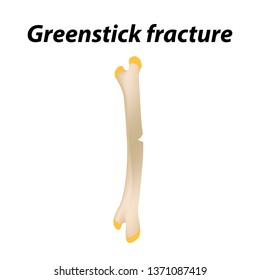Why Does Soft Tissue Treatment Pain? Understanding The Process
Why Does Soft Tissue Treatment Pain? Understanding The Process
Blog Article
Authored By-Waddell Saleh
When you go through soft Tissue treatment, you could find it remarkably uneasy. This discomfort develops as pressure is put on stressful muscular tissues and damaged cells, activating your discomfort receptors. While it can feel traumatic in the minute, there's a reason behind this feeling. Recognizing what takes place in your body during these therapies can aid you appreciate the procedure. So, what exactly is taking place beneath the surface area?
The Physiology of Pain During Soft Tissue Therapy
When you undertake soft Tissue treatment, your body's feedback to pain is an intricate interaction of physical processes. As the therapist applies stress, your body triggers discomfort receptors, sending signals to your brain. This sets off the launch of neurotransmitters, such as compound P and glutamate, which magnify the sensation of discomfort.
Your muscle mass may also tense up in action, further complicating the experience. In addition, your body might release endorphins, natural painkillers that can aid reduce some discomfort.
The communication in between these procedures can produce a special experience for every person. Understanding this physiological action aids you navigate the feelings throughout treatment, allowing you to appreciate the equilibrium between discomfort and the capacity for healing advantages.
The Function of Discomfort in the Recovery Process
Although pain during soft Tissue therapy can really feel frustrating, it plays a vital function in the healing procedure. When you experience discomfort, your body is signaling that it's working to repair damaged cells. This reaction assists raise blood circulation to the afflicted location, delivering important nutrients and oxygen needed for healing.
In addition, pain can promote the release of endorphins, your body's all-natural painkillers, creating a feeling of alleviation post-treatment. Embracing https://www.google.com/maps/place/Return+to+Play+Institute,+LLC+(Miami)/@25.726017,-80.26406,17z/data=!3m1!4b1!4m6!3m5!1s0x88d9b7b4207e8303:0xb1493a6e0d5a272b!8m2!3d25.726017!4d-80.26406!16s%2Fg%2F11lf8185yp?hl=en&entry=ttu&g_ep=EgoyMDI0MTAwOS4wIKXMDSoASAFQAw%3D%3D can aid you recognize your body's limitations and encourage you to resolve underlying concerns.
While it's unpleasant currently, this process is vital for long-term recuperation and boosted feature. Identifying discomfort as an essential part of healing can encourage you to remain committed to your therapy.
Tips for Handling Discomfort Throughout and After Treatment
Managing pain during and after soft Tissue therapy can considerably boost your overall experience and recuperation.
To start, interact openly with your specialist about your discomfort levels; they can readjust strategies as necessary. Utilizing deep breathing techniques can also help you unwind and relieve discomfort.
Consider applying ice to the cured location post-session to lower inflammation and numb discomfort. Remaining moisturized aids in the recuperation procedure, so consume lots of water.
Mild extending and light activity after treatment can advertise blood circulation and convenience stiffness. Lastly, ensure you obtain adequate remainder to permit your body to heal.
Implementing these ideas can make your soft Tissue treatment a lot more workable and enjoyable.
Conclusion
Finally, while soft Tissue treatment can be awkward, it's crucial to acknowledge that this pain plays a vital duty in your recovery trip. By understanding the physiological responses at play, you can come close to the treatment with a more positive state of mind. Remember, visit the site gives way to relief as your body launches endorphins. Welcome the process, and don't hesitate to utilize the ideas for taking care of discomfort to boost your experience and recuperation.
